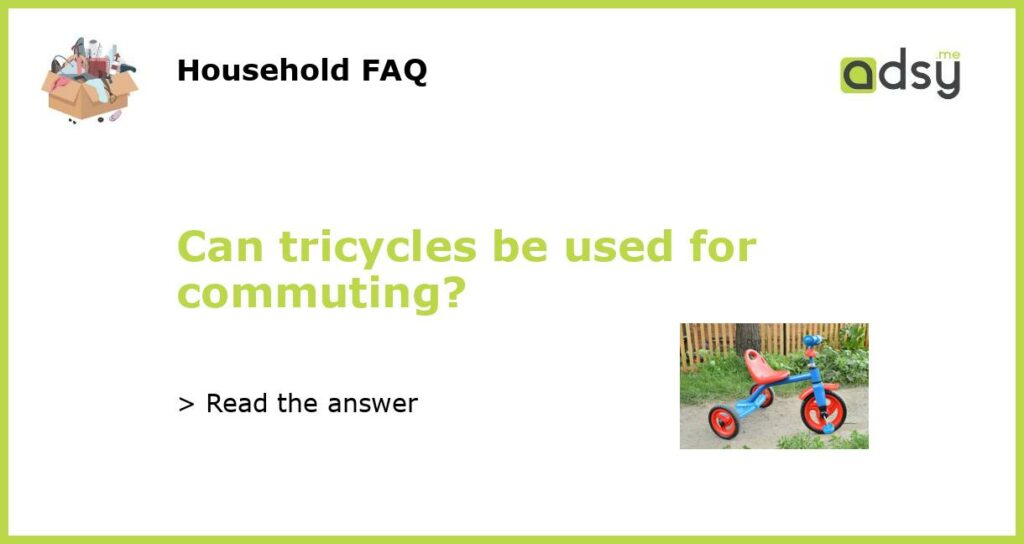Yes, tricycles can be used for commuting
When it comes to commuting, most people think of bikes, cars, or public transportation. However, tricycles are a viable option for commuting as well. While tricycles may not be as common as bicycles or cars, they offer several advantages that make them a great choice for commuting.
Advantages of using tricycles for commuting
1. Stability:
One of the main advantages of tricycles is their stability. Unlike bicycles, which require balance, tricycles have three wheels that provide a stable and secure ride. This makes them suitable for people of all ages and skill levels, including those who may have difficulty balancing on a two-wheeled bicycle.
2. Comfort:
Tricycles are also known for their comfort. They typically have a wide, padded seat that provides a comfortable sitting position. Additionally, the handlebars of tricycles are usually positioned at a comfortable height, allowing for an ergonomic riding position. This makes tricycles a great choice for long commutes or for those who have back or neck problems.
3. Storage:
Another advantage of tricycles is their storage capacity. Most tricycles come with a rear cargo basket or trunk that can be used to carry groceries, bags, or other belongings. This makes it easier to transport items while commuting, without the need for additional storage solutions such as backpacks or pannier bags.
4. Electric options:
Many tricycles also come with electric motor options, making them ideal for longer commutes or hilly terrains. Electric tricycles, also known as e-trikes or electric trikes, provide an extra boost of power that can assist riders in reaching their destination faster and with less effort. This is especially beneficial for those who may have physical limitations or who want a more leisurely commuting experience.
5. Environmental friendliness:
Using a tricycle for commuting is also an environmentally friendly choice. Tricycles produce zero emissions and do not contribute to air pollution. By opting for a tricycle instead of a car or motorcycle, commuters can reduce their carbon footprint and help promote a cleaner and greener environment.
Considerations when using tricycles for commuting
While tricycles offer several advantages for commuting, there are some considerations to keep in mind:
1. Speed:
Tricycles are generally slower than bicycles or cars, especially if they are not electric-powered. This means that commutes with a tricycle may take longer, especially if there are long distances or time constraints involved. However, for shorter commutes or leisurely rides, the speed may not be a significant factor.
2. Infrastructure:
The infrastructure of the commuting route should also be considered. Tricycles may require wider lanes or paths compared to bicycles, especially if they have a larger width or turning radius. It is important to ensure that the chosen commuting route is suitable for tricycle use and provides a safe and accessible environment.
3. Weather conditions:
Weather conditions can also impact the feasibility of using a tricycle for commuting. Tricycles may be more affected by strong winds or adverse weather conditions compared to bicycles. Additionally, tricycles may not be suitable for snowy or icy terrains. It is important to assess the weather conditions and choose alternative transportation if necessary.
In conclusion, tricycles can indeed be used for commuting. They offer stability, comfort, storage capacity, and electric options, making them a viable alternative to traditional commuting methods. While there are some considerations to keep in mind, tricycles provide a practical and environmentally friendly option for those looking for a unique and enjoyable commuting experience.






